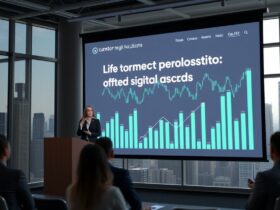The rapid advancement of neural networks, a subset of artificial intelligence, is progressively transforming technology as we know it. Each day, these complex systems, designed to mimic the human brain’s behavior, are integrated into more aspects of our daily lives. The potential applications of neural networks appear limitless, touching on fields ranging from healthcare to agriculture. Understanding how they are set to shape the future of everyday technology is crucial for staying ahead in this fast-evolving digital world.
Enhancing Personal Assistant Technologies
Personal assistant technologies, such as Siri, Alexa, and Google Assistant, are increasingly becoming an integral part of the technology framework within homes and workplaces. Neural networks have the potential to significantly enhance their capability, enabling more natural and contextual interactions.
Improved Speech Recognition
Neural networks are at the forefront of advancements in speech recognition. They enable personal assistants to understand and process human language with greater accuracy. This evolution allows for more nuanced commands and a better understanding of context, thus resulting in improved user satisfaction and engagement.
Contextual Awareness
Integrating neural networks into these technologies enhances contextual awareness, allowing personal assistants to comprehend not just direct commands but also the context in which they are given. This can lead to more intuitive device operation and a better overall user experience.
Revolutionizing Healthcare
The healthcare industry is another area poised to benefit profoundly from the innovations in neural networks. These systems can transform how medical data is analyzed, making diagnosis more precise and personalized care more achievable.
Predictive Analytics
Neural networks can analyze vast quantities of healthcare data to identify patterns that humans might overlook. This capability is crucial for predictive analytics, which can forecast disease outbreaks, predict patient outcomes, and personalize treatment plans based on individual needs.
Faster Image Analysis
Image analysis in radiology and pathology is notably improved by neural networks. They can process medical images quickly and accurately, drastically reducing the time needed for diagnosis. This speedup not only aids in faster treatment decisions but also in handling larger volumes of data.
Transforming Transportation
In the realm of transportation, neural networks are driving the innovation of autonomous vehicles. The ability of these systems to process real-time data is pivotal in creating safer and more efficient transportation solutions.
Autonomous Driving
Self-driving cars rely heavily on neural networks to interpret sensor data and make decisions on the road. This technology is crucial for navigation through complex environments and for ensuring passenger and pedestrian safety by reducing human error.
Traffic Management
Neural networks are also being utilized in smart traffic systems to optimize and manage congestion. By predicting traffic patterns and adjusting signals accordingly, these systems aim to improve traffic flow and reduce travel times, contributing to more efficient urban transport networks.
Conclusion
The future of neural networks in everyday technology promises a paradigm shift across multiple sectors. By continuing to refine these systems, we are likely to witness significant transformations in how personal assistants understand context, the way healthcare systems predict and treat diseases, and how our transportation infrastructures operate. As this technology advances, staying informed about its potential implications will be essential for both consumers and industries seeking to harness its power for practical applications. Embracing these changes can pave the way for a more connected and intelligent world.









Leave a Reply